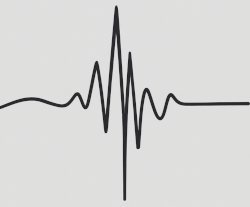1033/4 CE Palestine Earthquake(s)











Hebrew, Arabic, Greek, and Syriac sources—from Ramla and Antioch to
Constantinople, Baghdad, and Cairo—describe comparable effects of the 1033/4 CE Palestine Quake(s) in Jerusalem:
collapsed city walls, partial destruction of the al-Aqsa Mosque and nearby
convents and churches, fallen vaults and domes, shattered prayer niches,
and loss of life, followed by aftershocks and major reconstruction
efforts under Fatimid authority.
The earliest surviving account of this earthquake comes from
Solomon ben Zemah,
a contemporary writing in Ramla immediately after the shock.
He reports that an earthquake struck “suddenly before sunset,”
affecting the whole of Filasṭīn from fortified city to village,
including Jerusalem and its surroundings.
Near the same time,
Yahya of Antioch
wrote from Antioch that “part of the great mosque of Jerusalem
collapsed, as well as convents and churches in its province.”
This independent account details serious wall collapses in major religious structures, including
the Al-Aqsa Mosque and Christian monasteries.
A Greek source preserved in an
Analecta Ierosolymitikis Stachiologias
adds that when the Mutawil of Jerusalem began dismantling
churches for stone to rebuild the city walls, “an astonishing
earthquake” intervened: part of “the Dome in Jerusalem” fell,
half the wall of Ramla collapsed, and “a countless multitude
died.” This text, apparently composed soon after the event, highlights
damage to domes and vaults as well as defensive masonry.
A century later, the traveler
Benjamin of Tudela
repeated an earlier Hebrew narrative, describing how “the
citadels and the countryside were razed to sea level as far as
Banyas … as far as Jerusalem.”
In the second half of the 12th century,
Michael Glycas,
writing near Constantinople, reported that “Jerusalem was
afflicted by an earthquake, such that in the ruins of temples
and houses a large number of people were crushed and the earth
shook for forty days.” His version reinforces both the collapse
of domestic and sacred buildings and the persistence of
aftershocks.
Baghdadi historian
Ibn al-Jawzi
added architectural precision: “part of the city walls of Jerusalem
collapsed, a large piece fell off the
prayer niche (miḥrāb) of David
[in Al-Aqsa Mosque], but the Mosque of the Rock was not damaged.”
Two later writers preserved or reitereated al-Jawzi's account.
Bar Hebraeus
noted that “portions of the walls of the Temple in Jerusalem
fell down,” and
as-Suyūṭī, citing Ibn al-Jawzi as his source,
echoed that the wall of Bayt al-Maqdis (Jerusalem) collapsed as did a part of the
Miḥrāb of Dāwūd in Al-Aqsa Mosque.
Archaeological corroboration appears in later architectural
inscriptions. Restoration of the
Haram outer wall and the
Aqsa Mosque under the
Fatimid caliph al-Ẓāhir
is recorded by
Le Strange (1890:101-102),
who cites an inscription dated 425
A.H. (1033/4 CE)
mentioning repair of the southern and eastern outer walls and
another inscription observed by
Ali of Herat in 1173 CE, recording
the restoration and
re-gilding of the
Dome of the Aqsa in A.H. 426 (1034/5 CE).

